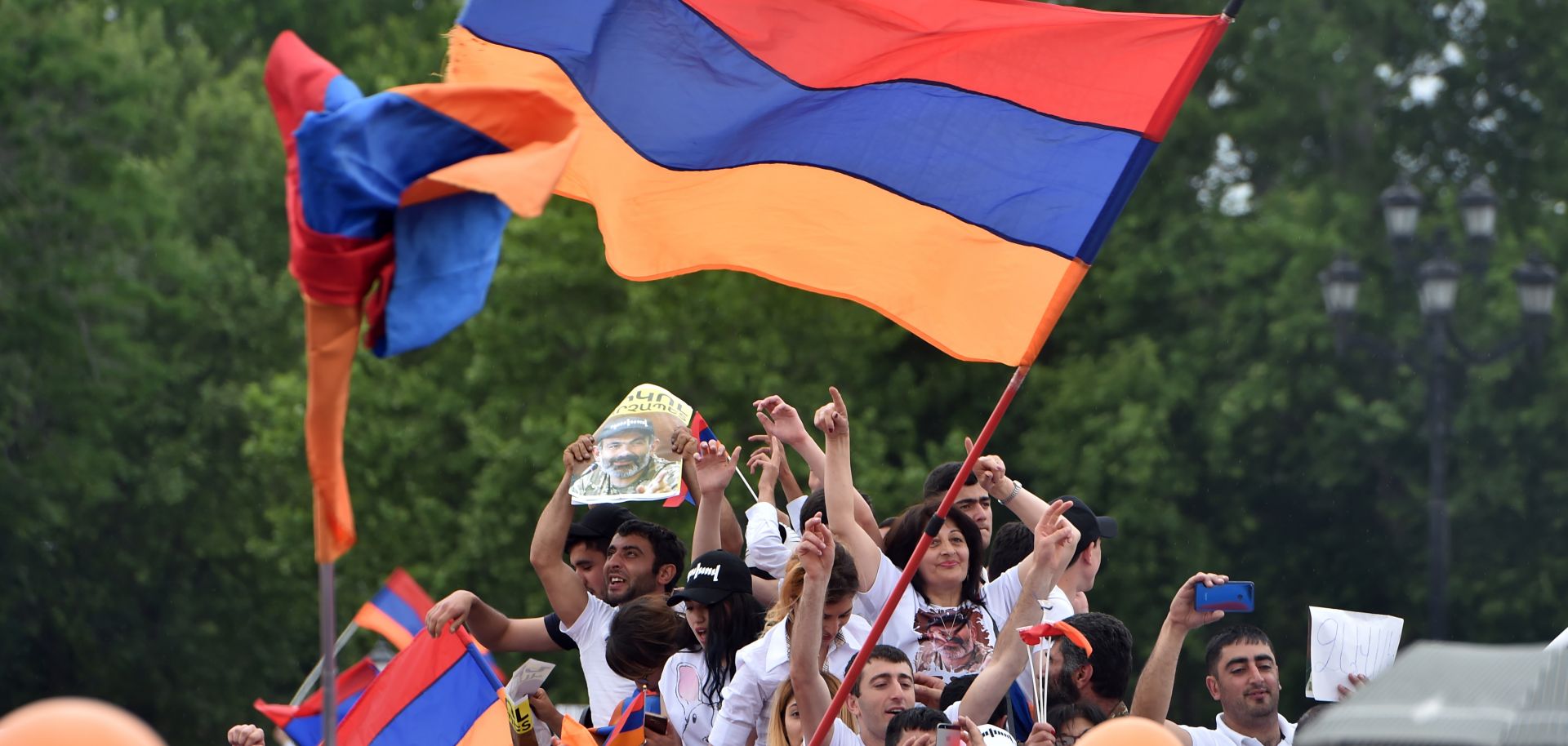ASSESSMENTS
What the Chill in Russian-Armenian Relations Means
Jan 21, 2019 | 10:00 GMT

Supporters of Armenian Nikol Pashinian celebrate in Yerevan's Republic Square on May 8, 2018. Pashinian would go on to become prime minister. As ties between Yerevan and Moscow hit a rough patch, others could make inroads with Armenia.
(SERGEI GAPON/AFP/Getty Images)
Highlights
- Tight ties between Armenia and Russia have long been a mainstay in the Caucasus, but rising tensions between Yerevan and Moscow could significantly undermine their relationship.
- The tensions especially threaten Armenia's military ties with Russia, although they could also impact natural gas flows between the countries.
- If the Russian-Armenian relationship continues to fray, other powers, including the United States, Iran and Turkey, could make inroads in the Caucasus country and weaken Russia's position.
- This, in turn, could force Russia to focus more on bolstering ties with one of Armenia's biggest nemeses, Azerbaijan, raising the prospect of greater instability in the region.
Subscribe Now
SubscribeAlready have an account?
